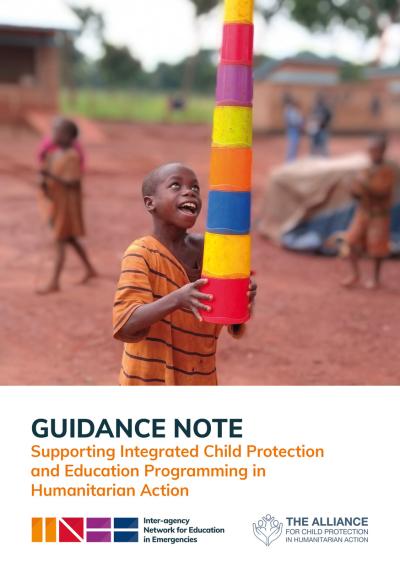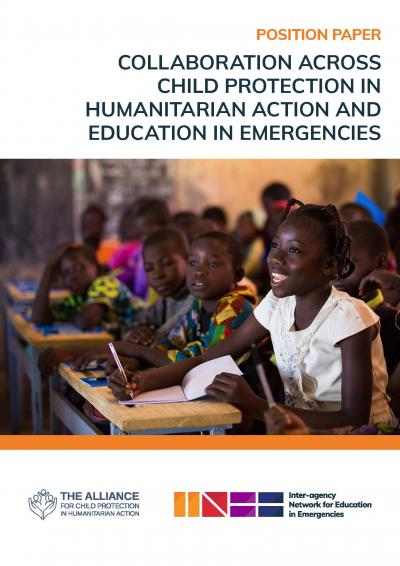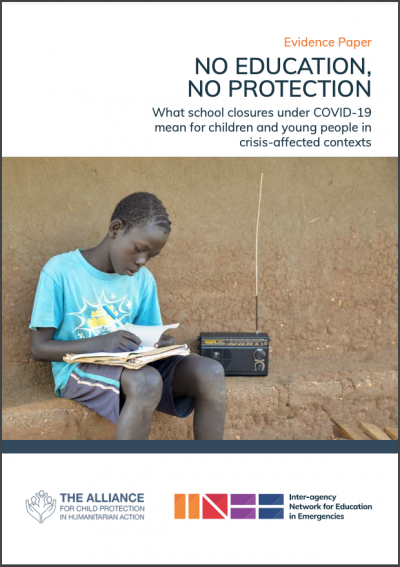Child Protection
“The sharp escalation in the scale and intensity of armed conflicts and the increasing violation of International Humanitarian Law (IHL) and International Human Rights Law (IHRL) throughout 2023 has had devastating consequences for children’s rights, including their right to protection. One in five children globally live in or are fleeing from conflict zones. Forced displacement reached unprecedented levels in 2023 and children constitute 41% of all forcibly displaced people despite being only 30% of the world's population. Due to the protracted nature of conflict, the majority of these children will spend their entire childhoods in displacement…The UN Secretary General’s 2023 report on Children and Armed Conflict included the highest ever numbers of verified grave violations against children throughout 2022. Attacks against schools and hospitals increased by 112%, and the recruitment and use of children by armed forces and armed groups rose by 21% compared to the previous year.” (The Alliance, 2023)
Humanitarian crises often have long-lasting, devastating effects on children’s lives. Whether caused by armed conflict or a sudden onset natural disaster, crises exacerbate pre-existing vulnerabilities and protection risks as well as create new risks for children. Children may face a greater risk of injury and disability, neglect, physical and sexual violence, psychosocial distress and mental disorders, family separation, recruited into armed forces, exploitation, and death. Refugees, internally displaced, and stateless children can be especially vulnerable.
Child protection is the ‘freedom from all forms of abuse, exploitation, neglect, and violence, including bullying; sexual exploitation; violence from peers, teachers, or other educational personnel; natural hazards; arms and ammunition; landmines and unexploded ordnance; armed personnel; crossfire locations; political and military threats; and recruitment into armed forces or armed groups.’. Child protection actors and interventions seek to center the protection of children in humanitarian action to prevent and respond to all forms of abuse, neglect, exploitation, and violence. Effective child protection builds on existing capacities and strengthens preparedness before a crisis occurs. During humanitarian crises, timely interventions support the physical and emotional health, dignity, and wellbeing of children, families, and communities. Child protection in humanitarian action (CPHA) includes specific activities conducted by local, national, and international child protection actors. It also includes efforts of non-child protection actors who seek to prevent and address abuse, neglect, exploitation, and violence against children in humanitarian settings, whether through mainstreamed or integrated programming. International and national organizations, community groups and schools, family support, and the children themselves can all serve to enhance the level of protection children experience. Sustainable solutions build on and strengthen these existing protective factors so that children are protected in the short and long terms.
Experience repeatedly shows that when children are protected in an effective and holistic manner, other humanitarian efforts - including education - are more successful. In turn, simultaneously strengthening child protection and education systems is proven to be one of the most cost-effective ways to build resilience and promote sustainable development. An intersectoral approach is therefore necessary to address the multifaceted challenges and risks faced by children in humanitarian settings.
Additional information on the needs and impacts of intersectoral programming to support the protection of children can be found in documents prepared by The Alliance for Child Protection in Humanitarian Action (The Alliance). Specifically, The Unprotected: Overview of the Impact of Humanitarian Crises on Children in 2023 and the Technical Annex: Recommendations to Support the 2023 Overview of the Impact of Crises on Children and Their Protection.
CPHA and Education in Emergencies (EiE) are natural partners in humanitarian response. The two sectors have much in common: both are child-focused, are priorities for affected populations, and, through collaboration, they reinforce each other’s sectoral outcomes. Mainstreamed, joint, and integrated programming across CPHA & EiE add value to affected populations, service providers, and donors. Working together can create more efficient, better-targeted, and more effective programs that result in improved outcomes for children and young people (Alliance and INEE, 2021). The Alliance and INEE are committed to strengthening the intersection between child protection and education during humanitarian crises. The Joint Pledge at the Global Refugee Forum 2023 outlines three areas of shared responsibility and collaboration. They are:
- Capacity and knowledge sharing amongst Child Protection and Education practitioners
- The promotion of evidence-based approaches to Education and Child Protection integration
- Collective action for collective impact: Joint advocacy on child protection and education integration
This collection was developed with the support of Rachel McKinney, INEE Thematic Areas Team Lead.







